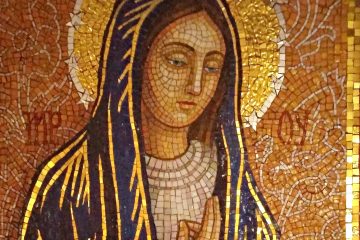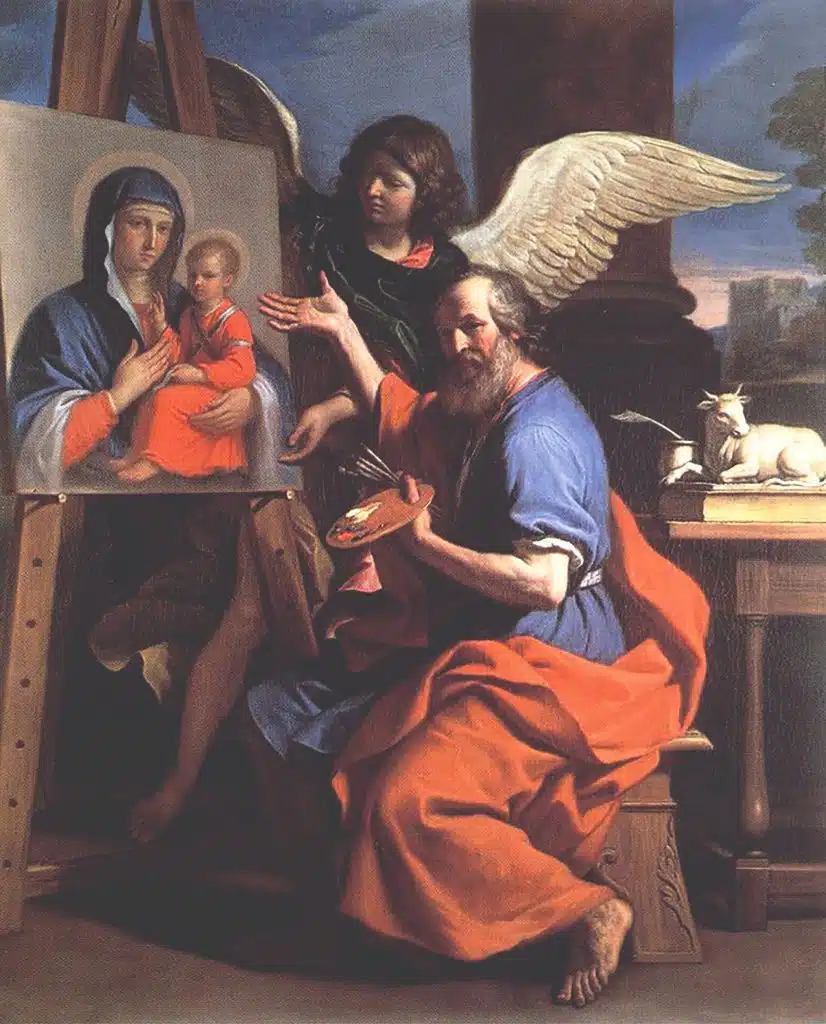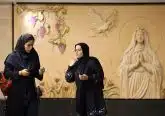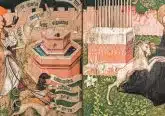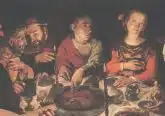St Luke and Beauty
In a visually saturated world, it’s easy to feel overwhelmed and become desensitized to beauty. Visio Divina, Latin for “divine seeing,” encourages us to slow down and engage in visual contemplation, using art as a profound tool for connecting with the Divine.
A Guide to Visio Divina
Begin by making the sign of the cross and inviting the Holy Spirit to guide your contemplation. Spend a moment meditating on St. Luke Displaying a Painting of the Virgin (also known as St. Luke at the Easel) by Guercino, created during the Baroque period. You can find this captivating painting in the Nelson-Atkins Museum of Art in Kansas City.
Background
Painted in 1652-53 during the Counter-Reformation (ca. 1545-1700), this work reflects the Catholic Church’s response to the theological confusion provoked by Martin Luther in 1517. Among his 95 theses, one argued that art should hold no place in the Church, claiming it distracts the faithful from God and encourages idolatry. Luther instead, emphasized reliance on scripture and spoken and written prayer. Tragically, this led to the widespread destruction and defacement of countless masterpieces in efforts to purge artwork from religious spaces.
Widely honored as one of the Gospel writers, St. Luke is less commonly known to be venerated as an artist and one of the many patron saints of artists. It is believed that he painted a firsthand image of Mary and Jesus on a table constructed by St. Joseph, although this lacks concrete evidence.
Enter In.
St. Luke sits in what appears to be his art studio or workspace. He holds multiple paintbrushes and an artist’s pallet in one hand, which presents him as artist. Before him, on the easel, rests a freshly painted canvas depicting a baroque-style Madonna and Child. Drawn in by the beauty and goodness emanating from the portrait, an angel hovers beside Luke’s shoulder, contemplatively studying his work, while reaching out to Mary and Jesus.
Yet, it seems that Guercino directs our attention not to the painting itself, but to St. Luke. Placed near the composition’s center, Luke intensely stares down the viewer. His stern, almost smug expression, paired with the voilà hand gesture, seems to lightly scold the viewer, as if saying, “Hey, look! Isn’t it beautiful? Art is important to our faith, and God approves!”
Guercino’s intent is clear: to justify the use of art in the Church and to challenge the Protestant groups of his time, addressing their differing beliefs on sacred art. While Protestants already admired St. Luke as one of the Gospel writers, they were now boldly introduced to him as not only an artist, but as one who personally illustrated Mary and Jesus.
To the right, a desk contains an inkwell and a small ox atop a large, closed book—presumably the Bible. This arrangement presents Luke as writer. However, it is intriguing that the symbols of writing are placed behind him. Art historian Dr. Zucker suggests, “[Luke has] literally turned his back on the written Word in order to focus on the painting.” Guercino poses this shocking juxtaposition to spark attention and encourage discussion. He is not communicating that one form of prayer is superior to the other, but rather emphasizes that both should hold equal importance in the life of the faithful, as St. Luke was both writer and artist.
Conclusion
Beauty is something that does not exist merely for aesthetic pleasure. When something is truly beautiful, it resonates and stirs deeply within us, beyond our physical senses. We become captivated and long for more. Plato recognized beauty as a reflection of the Transcendent, inseparably connected to goodness and truth. Therefore, what is genuinely beautiful must also be both good and true.
Guercino’s painting, St. Luke Displaying a Painting of the Virgin, emphasizes this Transcendence through sacred art. In many ways, his painting reflects the purpose of this article series: to invite you to pray with sacred art. By contemplating the beauty of such works, we can slow down, allowing us to be captivated by goodness and to experience truth.
Artists hold a unique and vital role within the Church. Divinely inspired, they are able to make what is unseen visible, inviting the faithful to see goodness, truth and beauty—a glimpse of God.
St. John Paul II wrote a Letter to Artists in 1999, saying that every human person, especially artists, innately holds the Divine Spark, a gift of divine creativity. What I love about this letter is that St. John Paul II speaks to artists not only in the traditional sense. “Not all are called to be artists… Yet, as Genesis has it, all men and women are entrusted with the task of crafting their own life: in a certain sense, they are to make [life] a work of art, a masterpiece” (Letter to Artists, 1999).
Even if you do not think you are creative—you are! It is transcribed in our being by the most creative Creator: God, Himself.
 Emma Cassani is the graphic designer behind The Catholic Telegraph. She is passionate about exploring the intersection between art and
Emma Cassani is the graphic designer behind The Catholic Telegraph. She is passionate about exploring the intersection between art and
faith. | [email protected]
This article appeared in the February 2025 edition of The Catholic Telegraph Magazine. For your complimentary subscription, click here.









